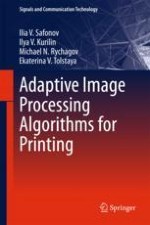This book presents essential algorithms for the image processing pipeline of photo-printers and accompanying software tools, offering an exposition of multiple image enhancement algorithms, smart aspect-ratio changing techniques for borderless printing and approaches for non-standard printing modes. All the techniques described are content-adaptive and operate in an automatic mode thanks to machine learning reasoning or ingenious heuristics. The first part includes algorithms, for example, red-eye correction and compression artefacts reduction, that can be applied in any photo processing application, while the second part focuses specifically on printing devices, e.g. eco-friendly and anaglyph printing. The majority of the techniques presented have a low computational complexity because they were initially designed for integration in system-on-chip. The book reflects the authors’ practical experience in algorithm development for industrial R&D.
